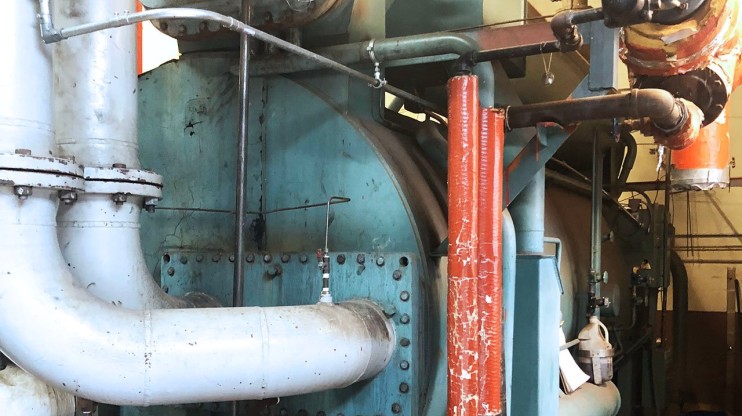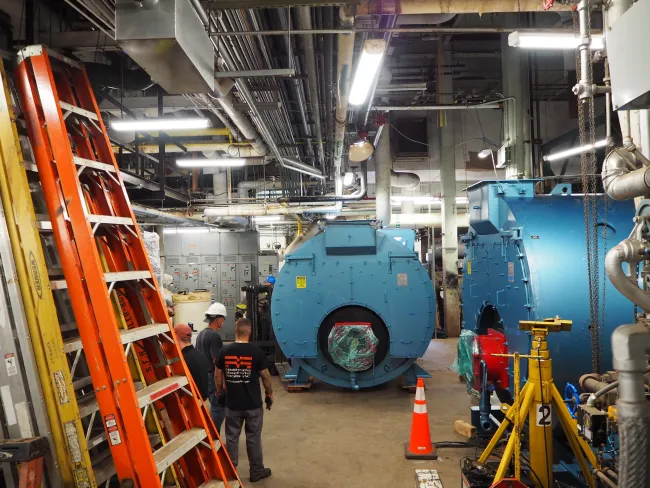Have Questions? We’re Here to Help!
Discover more about improving facility performance while reducing costs.

The ability to control and automate building systems, including HVAC, is an obvious gain for a facility manager. HVAC systems are critical to any facility's purpose and are responsible for several vital functions essential for pharmaceutical facilities. Because HVAC enables production, pharmaceutical or otherwise, careful design and maintenance are crucial, and improvements in HVAC in the pharmaceutical or biotech industry can result in significant energy savings. A big part of this includes the controls system.
A Building Management System properly implemented, configured, and regularly used by facility personnel enables pharmaceutical and biotech facilities to achieve better HVAC and other system operations. A well-managed system ensures both the quality and sensitive environment necessary for pharmaceuticals and system control, which all modern facilities need to lower costs and run efficiently.
HVAC systems in biotech or pharmaceutical manufacturing facilities control three primary things:
The ventilation system must supply clean air and other equipment that is responsible for a clean, healthy environment within the facility's specifications. The HVAC and mechanical systems for pharmaceutical or biotech facilities are pretty complex. Typically, multiple components form the systems, and each component (rooms or equipment) needs a large amount of energy to run.

Photo from a recent healthcare boiler installation.
There are dozens of examples of facility types and equipment needed for biotech or pharma buildings others. Among them are:
These facilities must avoid contamination of the exterior environment (toxic waste) and the manufactured products (pharmaceutical drugs that require clean rooms for production).
Biotech manufacturing processes have become more stringent, and HVAC is crucial in ensuring proper balance, pressure relationships, internal production quality, and environmental impact.
{{cta('eda645d3-c1d1-42f6-a5b2-393fd98fd73a','justifycenter')}}
Recent reports show the following facts:
For years, it's been general knowledge that energy consumption continues to rise, and HVAC energy use composes a large portion of that consumption.
Less common is knowing how to tackle this challenge, especially in an industry like pharmaceutical manufacturing, where environments are susceptible to running more redundancy than needed based on the fear of risk rather than actual data.
Upgrade, schedule, measure, monitor, adjust and repeat. We've previously discussed energy efficiency in biotech and pharmaceutical facilities and pointed out three tactics for saving energy in HVAC systems:
Not every system needs to run at 100% when not required. These systems can include lighting sensors or scheduling heating/cooling based on occupancy or run-hours.
Equipment upgrades can bring immediate efficiency simply by using new models. Some essential equipment that probably needs upgrades include chillers, air handlers, and boilers. This project can gain utility incentives to help cover the cost if designed for efficiency.
An EMS provides a central view of the facility's systems. Building Management Automation and controls help you make decisions based on actual facility operations and energy use rather than guesswork, legacy protocol, or fear of downtime.
A well-designed Building Management System should be open protocol and pull data from all facility systems to show you what's going on through a single viewport. The problem is often getting there.
For one example, a BMS monitors and controls airflow, which affects relative humidity. For a biotech/pharma facility, managing relative humidity is essential. An AHU has desiccant wheels for dehumidification and coils for humidification. The function of both varies depending on space requirements and outside air conditions. Integrating the AHU into your biotech/pharma facility BMS will give you a better handle on supply air humidity and when to adjust it.
Building automation is a powerful ally in these types of facilities. The system can control dozens of functions, including:
More automation also means more and better data for better decision-making regarding controlling various pieces of heating and cooling equipment.
For all HVAC, opportunities for retrofitting depend on:
They also depend on how this equipment has been maintained, especially redundant equipment.
Evaluating emergency equipment, life safety equipment, and backup systems in biotech is vital. Facilities should also perform load bank testing on generators.
To consider whether a facility needs an improved controls system, ask yourself:
Controls systems and how they integrate with HVAC can be overwhelming. Running a BMS streamlines a facility manager's job for pharmaceutical facilities, where sensitive equipment runs and environments are carefully controlled. Implementing an intuitive system connecting HVAC and mechanical will help a facility manager better manage the already sensitive environment.
If you are considering adding layers or automation to your building systems or connecting disparate systems for better visibility and control, contact a Mantis Pro today.
Discover more about improving facility performance while reducing costs.